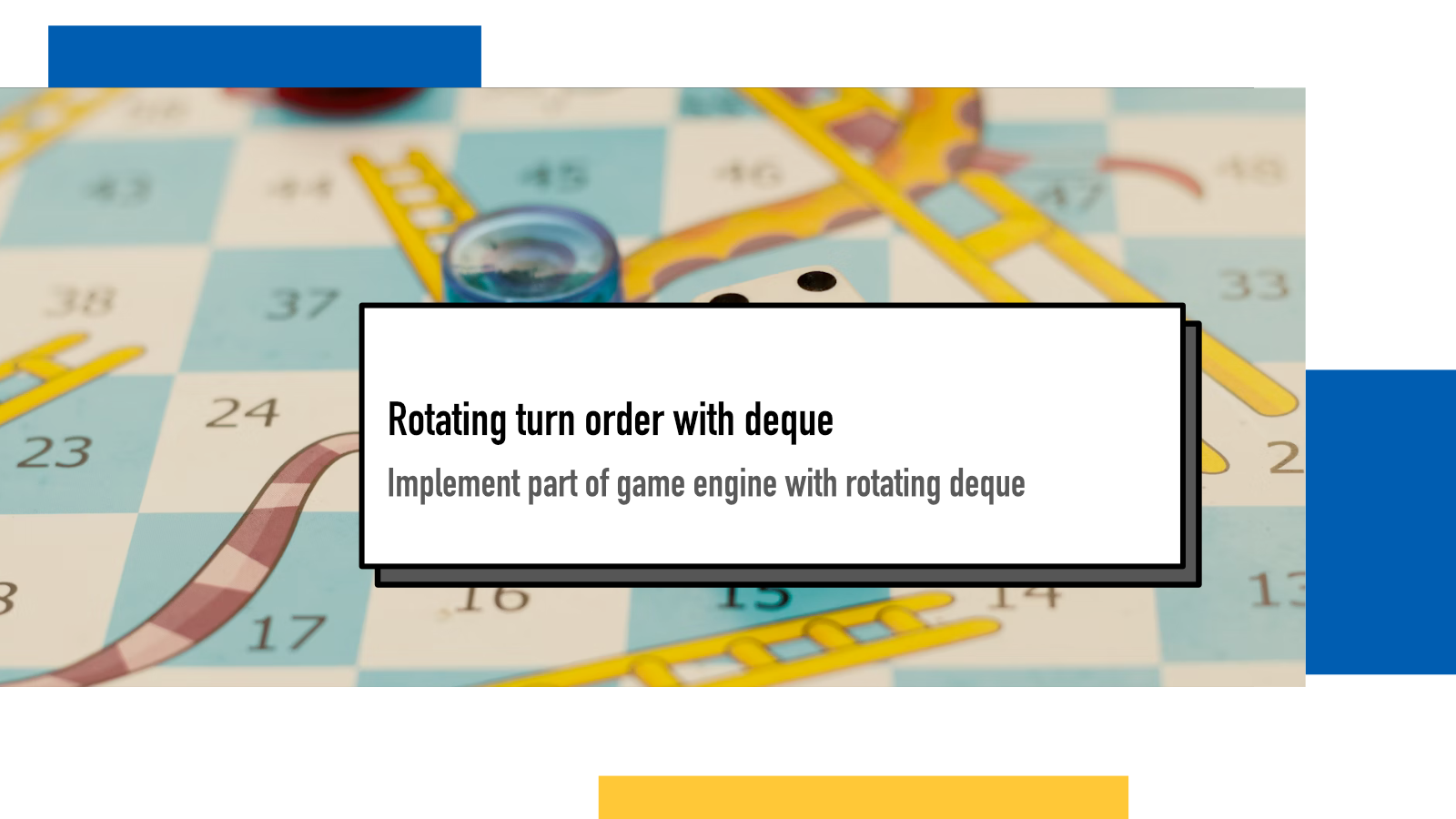Rotating turn order with deque

Batteries included is a blog series about the Python Standard Library. Each day, I share insights, ideas and examples for different parts of the library. Blaugust is an annual blogging festival in August where the goal is to write a blog post every day of the month.
A while back in the spring I was in a technical job interview where I was tasked to implement a Kimble game engine. While the idea didn’t unfortunately pop into my head during the interview, when I was revising my approach later, I realized that deque is a nice data structure for rotating turn order.
Initial solution
My interface into the game ended up looking a bit like this
players = [
Player('Lion'),
Player('Two reeds'),
Player('Twisted flax'),
Player('Horned viper')
]
game = Kimble(players=players)
while not game.is_finished():
game.advance()The game had to keep track of the players and keep them running in a loop until the game is over.
Initially in the job interview phase, that part ended up looking like this:
def next_player(self):
next = self.players[
(self.players.index(self.current_player) + 1) % len(self.players)
]
self.current_player = next
return nextThat looks very much like code that was written in an interview situation: under stress, within a time limit and having to balance thinking, coding and communicating at the same time.
Improved with deque
Later when I returned to reflect on the solution, I realized this would make great use for a deque so I refactored:
from collections import deque
players = deque([
Player('Lion'),
Player('Two reeds'),
Player('Twisted flax'),
Player('Horned viper')
])
game = Kimble(players=players)
while not game.is_finished():
game.advance()First, my change was to turn players from list to a deque.
And in the part of the code where I had to find the current player, I would write
current_player = self.players[0]
# Do all the things
self.players.rotate(-1)Thanks to deque.rotate, I was able to simplify the entire thing into a single rotation of the deque at the end of each turn.
To demonstrate how it works, let’s look at a simpler, isolated example that can be run:
animals = deque(['🐍', '🐤', '🐼', '🦄']) # Create a deque of animals
for _ in range(10):
print(animals)
animals.rotate(-1)
# deque(['🐍', '🐤', '🐼', '🦄'])
# deque(['🐤', '🐼', '🦄', '🐍'])
# deque(['🐼', '🦄', '🐍', '🐤'])
# deque(['🦄', '🐍', '🐤', '🐼'])
# deque(['🐍', '🐤', '🐼', '🦄'])
# deque(['🐤', '🐼', '🦄', '🐍'])
# deque(['🐼', '🦄', '🐍', '🐤'])
# deque(['🦄', '🐍', '🐤', '🐼'])
# deque(['🐍', '🐤', '🐼', '🦄'])
# deque(['🐤', '🐼', '🦄', '🐍'])
You can see here that on every iteration, we move each item one to the left
(with -1 ) and anything that would fall
off from the edge gets added to the end of the deque.
Alternative option: itertools.cycle
Update Oct 8th 2024: A reader pointed out that you can also achieve the same with itertools.cycle. And it's part of the standard library too!
from itertools import cycle
animals = cycle(['🐍', '🐤', '🐼', '🦄'])
for _ in range(10):
animal = next(animals)
print(animal)If something above resonated with you, let's start a discussion about it! Email me at juhamattisantala at gmail dot com and share your thoughts. In 2025, I want to have more deeper discussions with people from around the world and I'd love if you'd be part of that.